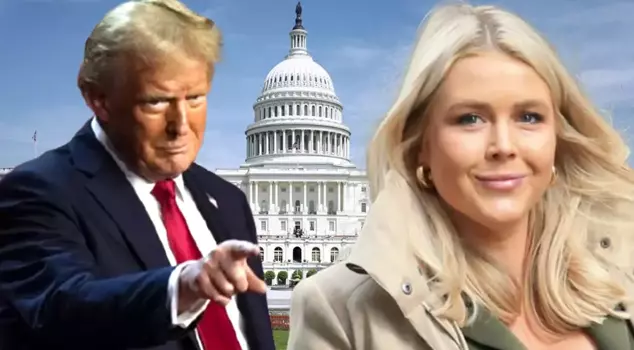
16.11.2024 13:50
The elected president of the United States, Donald Trump, stated that he would appoint Karoline Leavitt, the spokesperson for his election campaign, as the White House Press Secretary.
Donald Trump, who became the 47th president of the United States by surpassing Kamala Harris, announced that he would appoint Leavitt as White House Press Secretary, stating that he "did a great job" while serving as the spokesperson for Trump's campaign. Trump described Leavitt as "smart, tough, and an extremely effective communicator," expressing his full confidence that "he will succeed at the podium and help us convey our message to the American people while making America great again."
THANK YOU POST ON SOCIAL MEDIA
Leavitt, who served as Deputy White House Press Secretary during Trump's first term, shared Trump's statement on his account on the social media platform X, thanking the elected president. In another statement, Trump announced that he would appoint Steven Cheung, who served as the communications director during the campaign, as White House Communications Director.
In a statement made on his own social media platform, Truth Social, Trump announced that North Dakota Governor Doug Burgum, whom he nominated for Secretary of the Interior, would also chair the newly established "National Energy Council." Trump noted that the council would encompass "all government agencies and organizations involved in permits, production, distribution, regulation, and transportation" in the energy sector and would oversee "the path to U.S. energy dominance."
ROLES IN THE CABINET AND APPROVAL PROCESS
In the U.S., there are 15 key roles in the cabinet, excluding the vice president, with whom the president works in governing the country. These individuals begin their duties after being nominated by the president and receiving Senate approval.
These positions include the Department of State, Department of the Treasury, Department of Defense, Department of Justice, Department of the Interior, Department of Agriculture, Department of Commerce, Department of Labor, Department of Health and Human Services, Department of Housing and Urban Development, Department of Transportation, Department of Energy, Department of Education, Department of Veterans Affairs, and Department of Homeland Security.
In addition to these main departments, there are 10 additional positions with second-tier roles at the cabinet level, but this number can vary depending on the president's discretion.
In this context, the directors of the White House Office of Management and Budget, the Central Intelligence Agency (CIA), the Environmental Protection Agency, the Office of National Intelligence, the U.S. Trade Representative, the U.S. Permanent Representative to the UN, the Council of Economic Advisers, the Small Business Administration, and the Office of Science and Technology Policy are appointed.
Except for the Office of Management and Budget, the nominees for other positions must receive approval from the U.S. Senate.